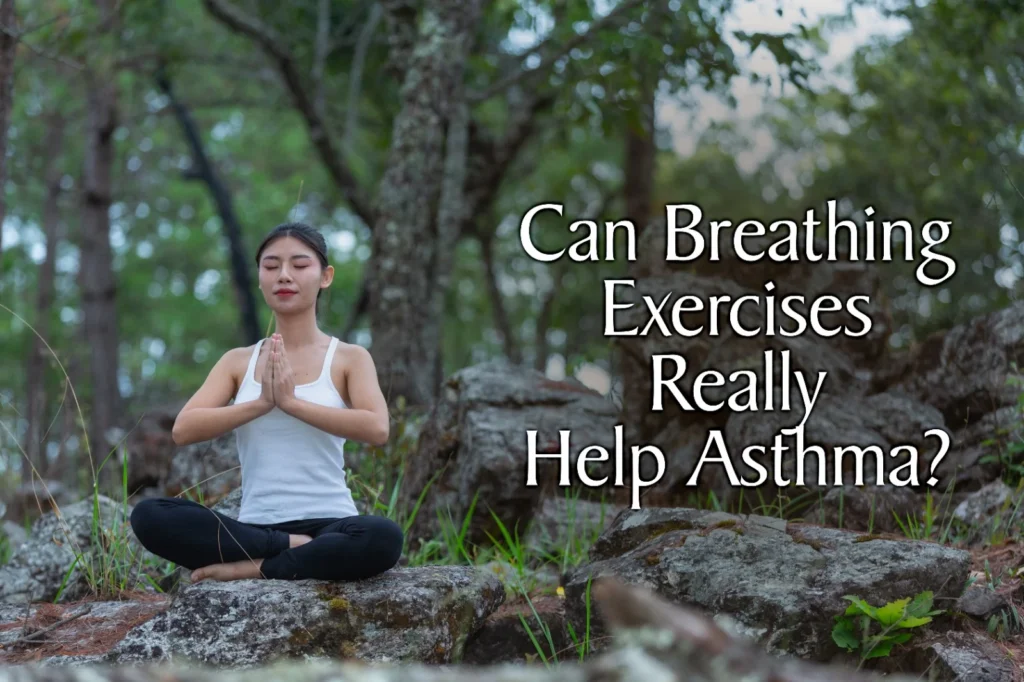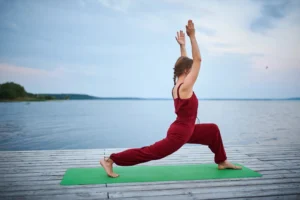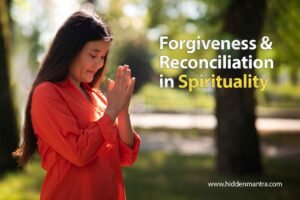Table of Contents
ToggleUnderstanding the Scope of Asthma
Feeling so much crushed due to Asthma? Had consulted many ways such as Allopathy, Unani etc. to cure the illness, but no results. Here why Pranayama takes its place. Asthma is a long-term inflammatory disorder of the airways that affects bronchioles; causing them to become inflamed, swell, narrow, and secrete mucus excessively. The symptoms which include wheezing, reduction of breath, chest tightness and a cough, brought on mainly by sneezes at night or in the early morning hours, happen because of Asthma. According to estimates, around 300 million individuals are ever so afflicted by asthma around the globe, with incidences increasing primarily due to pollution, allergens, and changes in life. Many people are still symptomatic with disturbed quality of life even after medications like inhaled corticosteroids and bronchodilators. There, yoga and pranayama for asthma have increasingly attracted interest as potential complementary therapies.
Introduction to Pranayama
The word Pranayama is formed due to the coming together of two Sanskrit roots; ”prana”, which means life force, and “ayama” which can be translated as control. Pranayama is a activity held within the stages at yoga that dedicates on controlling the breath. Pranayama is one of the important elements in eight limbs of Ashtanga Yoga that is discussed in Yoga Sutras of Patanjali and is a powerful human activity for overall health and wellness. Comprehensive Pranayama includes repetition of breath patterns which can change a practitioner’s physical, emotional, and mental state of being. The practice of Pranayama has existed in Indian culture for hundreds of years and the medical community is beginning to realize the powerful potential of pranayama to aid the respiratory system, influence autonomic function, and may even alleviate stress related diseases. I have seen clinical trials in which pranayama was evaluated in chronic respiratory disease, specifically asthma, and I remain optimistic that those studies will demonstrate the capacity for joyful breathing with pranayama will help reduce symptomology and enhance quality of life.
Case Study: Pranayama’s Effectiveness in Asthma Management
Study Overview
Various randomized controlled trials (RCTs) have investigated the efficacy of various forms of pranayama for asthma management. A RCT design was used in which a group of mild-moderate asthma patients were enrolled and trained to practice pranayama every day for 4 weeks and 6 months. Anulom Vilom, Bhastrika, Kapalbhati, Bhramari and Ujjayi pranayama were predominantly practiced by the participants. A measure of asthma control (medication use, PFTs, and quality of life) was determined on follow up and a change from baseline measured over time was carried out using the old stated and presented questionnaires which are including the Asthma Quality of Life Questionnaire (AQLQ) and St George’s Respiratory Questionnaire (SGRQ).
Key Findings
Improved Control of Asthma and Quality of Life:
One study appeared in the International Journal of Yoga; with 50 patients with asthma who practiced pranayama for 20 minutes a day for a month. The intervention group demonstrated significant improvements in both asthma control and quality of life scores when compared with the control group who performed simple relaxation techniques. Also patients reported decreases in episodes of shortness of breath and more sustained levels of activity. This is presented by conducting through scores on the ACT questionnaire.
Reduction Responsibilities and Use of Medication:
In another RCT comparing pranayama to Buteyko breathing style, researchers found patients practicing pranayama significantly, over the 6 months, reduced their use of bronchodilator years (2 puffs less per day). While lung function demonstrated by a Forced Expiratory Volume in one second (FEV1) measure did not demonstrate a significant improvement, subjective symptoms and the number of attack frequencies decreased significantly.
Improved Pulmonary Function:
Technique A study using other spirometric measures showed that participants who practiced pranayama for three months, perceived improvements in their FVC, PEFR, and FEV1 . The results suggest that airway and respiratory muscles are more efficient.
Quality of Life Improvements:
Pranayama practice, when added to regular medications, showed reductions in SGRQ symptoms, activity and psychological impact scores in a study based on SGRQ. This indicates the scope of pranayama to be included in pharmacological interventions and enhance quality of life of an individual.
Pranayama Techniques Used
The following pranayama techniques were most frequently employed in studies on asthma:
● Anulom Vilom (Alternate Nostril Breathing)
● Bhastrika (Bellows Breath)
● Kapalbhati (Cleansing Breath)
● Bhramari (Humming Bee Breath)
● Ujjayi (Victorious Breath)
How Pranayama Works: Physiological Mechanisms
Exercise for Respiratory Muscles
Diaphragmatic breathing exercises improve the power and coordination of the diaphragm and the intercostal muscles. Long term, that increases respiratory endurance and lung function, and for people with asthma, whose airways can constrict, that’s essential.
Nervous System Regulation
The parasympathetic nervous system is stimulated by practicing pranayama, in particular slow and deep breathing. It will protect against an increase in sympathetic tone that exacerbates a asthmatic condition. As it facilitates relaxation, pranayama can help minimize the frequency and intensity of asthma attacks that occur due to stress or nervousness.
Improved Oxygen and Carbon Dioxide Exchange
The majority of pranayama techniques support improved efficiency of alveolar ventilation as far as oxygen uptake and carbon dioxides exhalation. This matters because asthmatics with more stable blood gas levels have less of a tendency toward hyperventilation or breathlessness.
Reduction in Stress and Anxiety
Psychological stress is a well-equipped input for asthma exacerbations. Pranayama practices of Bhramari and Ujjayi to calm the mind can decrease cortisol levels and provide emotional balance, decreasing the overall risk of stress-related attacks and also improving mental health overall.
Overview of Pranayama Techniques Used in Studies
Anulom Vilom (Alternate Nostril Breathing)
In this type of practice, the practitioner breathes in through one nostril and out through the other, switching nostrils and repeating the process. This works out to stimulate the nervous system, oxygenation of the body, as well as calming the emotions and asthma patients have a lot to gain out of the stability.
Bhramari (Humming Bee Breath)
Bhramari is about generating a soft radiating sound while breathing out. The sound produces vibrations which relax the brain allowing the heart muscles to relax and decrease tension in chest muscles that inhibit the lungs from expanding properly.
Bhastrika (Bellows Breath)
Bhastrika is a powerful breath that activates the respiratory system. It’s good for lung capacity and sinus passages. But it should be used with caution and never during an acute attack of asthma.
Kapalbhati (Cleansing Breath)
Kapalbhati consists of powerful exhalation and passive inhalation. It’s detox to the lungs and helps you use your oxygen. The workout is so intense, in fact, that it’s recommended to be performed under supervision, particularly for those with moderate to severe asthma.
Ujjayi (Victorious Breath)
Ujjayi, maintaining a slight closure at the back of the throat when you breathe in and out, which results in a light, sea-like sound. Ujjayi breath increases our mindfulness and awareness of breath, so it can be practiced by both beginners and more advanced practitioners.
Safety Guidelines and Precautions
Learn from Certified Instructors
Proper technique is essential to gain the full benefits of pranayama and avoid complications such as dizziness, hyperventilation, or muscle strain. Always learn from qualified yoga instructors who understand asthma-specific modifications.
Avoid Certain Techniques During Asthma Episodes
Pranayama techniques like Kapalbhati and Bhastrika involve pressureful breathing and should be avoided during active symptoms or reduces asthma attacks. Instead, gentler practices like Anulom Vilom and Bhramari are more appropriate.
Medical Consultation is Key
The first step before going into any pranayama routine is to consult and talk with your healthcare provider to ensure it blends with your asthma management plan. Pranayama should complement, not replace, prescribed medications.
Real-Life Transformations: Case Studies & Testimonials
A lot of people who suffer from asthma have experienced immense relief when pranayama was included in their daily activities. For example, a 38-year-old woman from kerala said, “anulom vilom and bhramari has helped me a lot, within a short period of time I am feeling so confident with less inhaler and deep sleep and more energy level.” And a young man who picked up Ujjayi and Nadi Shodhana found that he was having less asthma attacks during allergy season, and better focus at work.These stories echo the clinical findings and highlight pranayama’s transformative potential when practiced consistently under guidance.
Conclusion: Breathing New Life Into Asthma Management
Pranayama may be a complementary base treatment in asthma. Research works have evidenced that Anulom Vilom, Bhramari, Ujjayi pranayama practice can lead to considerable improvement in symptoms improving the performance of lung and the quality of life of the asthmatics. While it is not an alternative to medical treatment, pranayama can be an empowering self-care practice when done consistently and correctly.
For individuals who want to integrate pranayama into their asthma management but not overdo it, mild practices are recommended with the guidance of a certified yoga therapist. When practiced regularly and under expert guidance, there really is a breath of fresh air that yoga can bring into asthma regime!
To learn more about bringing a balance in your physical and spiritual life through yogic practices like pranayama, (wellness platform) Hidden Manthra is a gateway for traditional Indian therapies with modern and evidence based approach.









